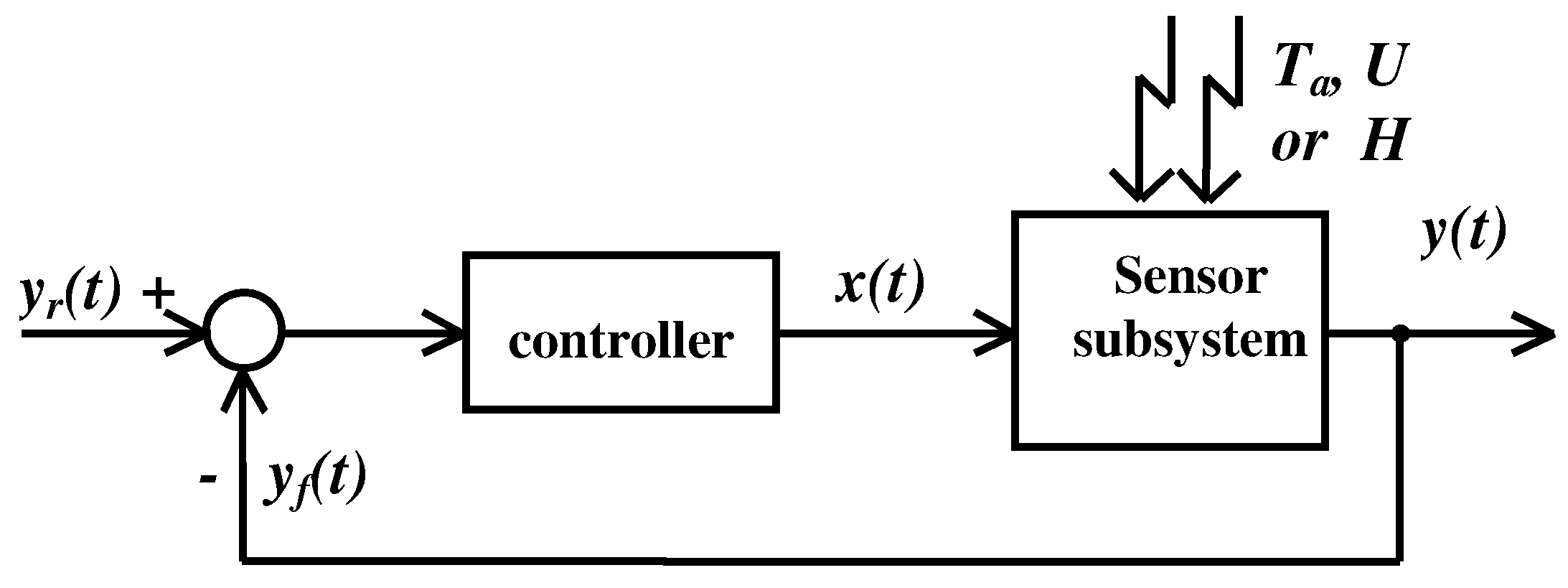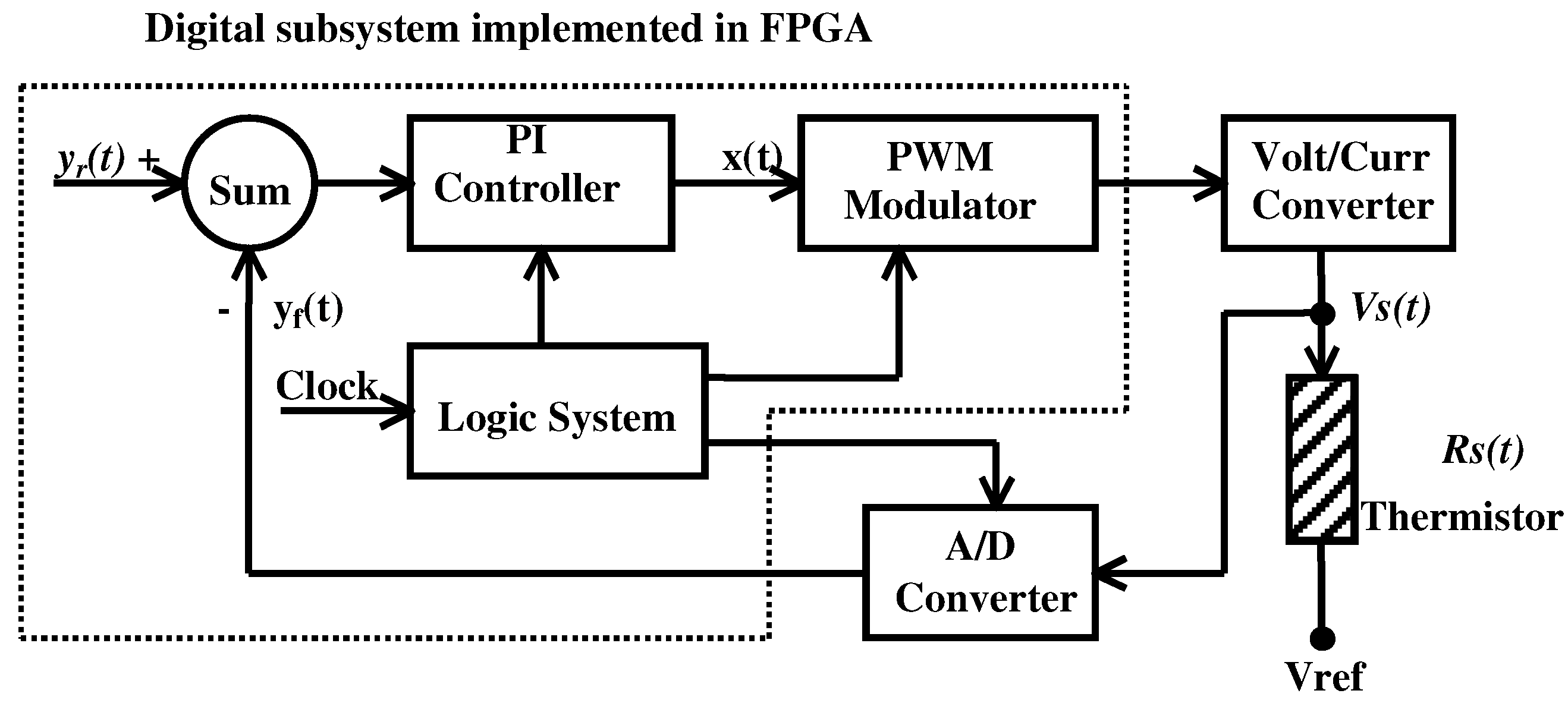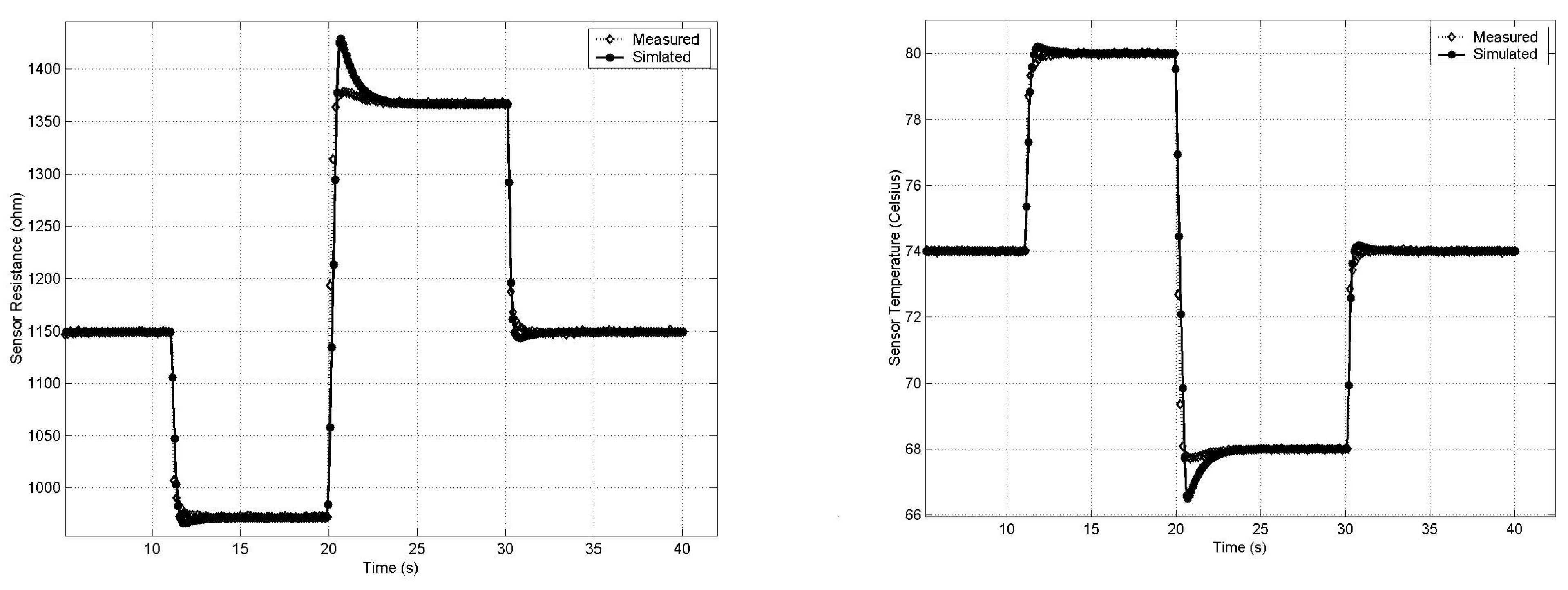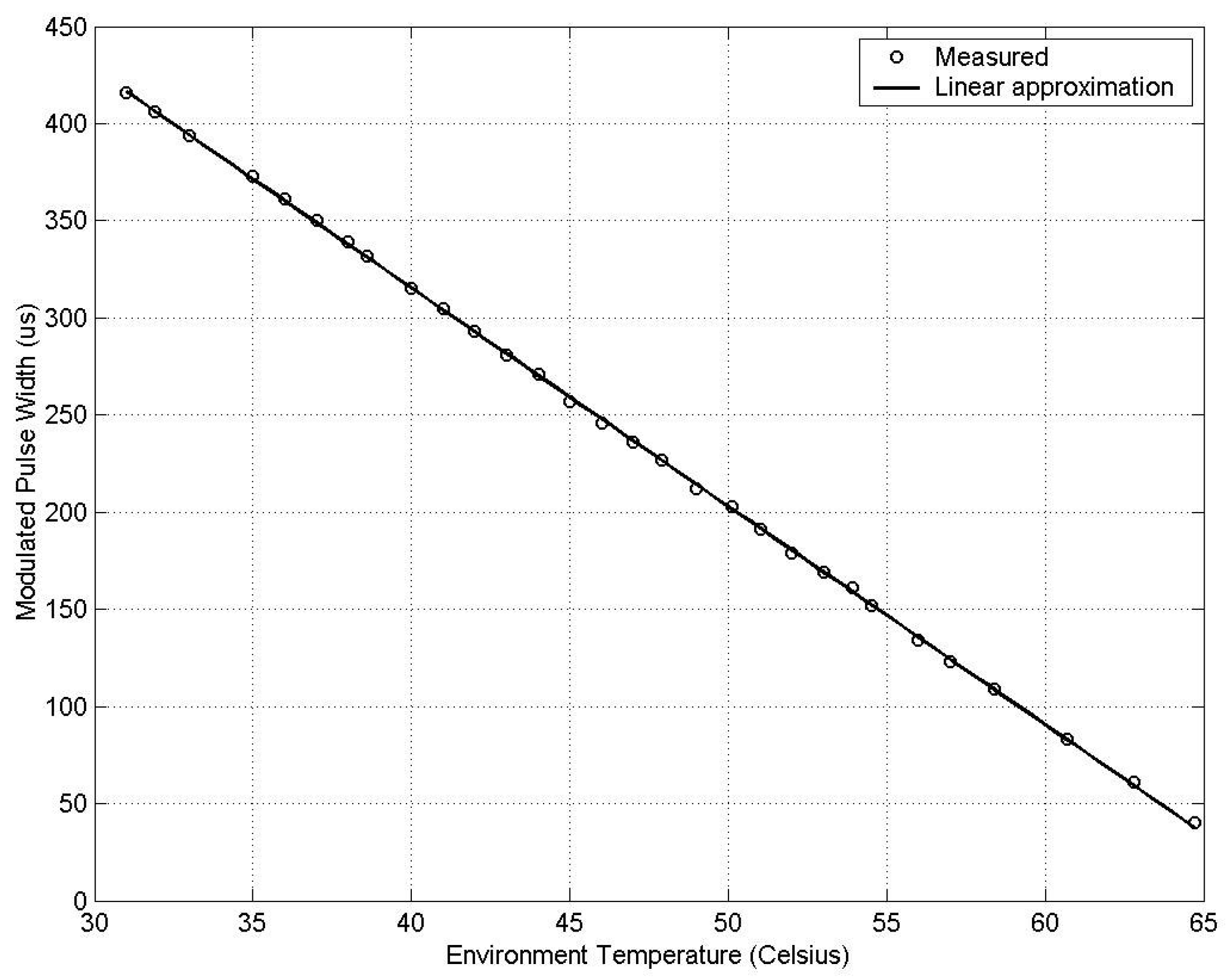Implementation of a Feedback I2-Controlled Constant Temperature Environment Temperature Meter
Abstract
:Introduction

Formulation
Static analysis of the feedback system

Model of small signal of thermo-resistive sensor



Controller transfer function

Model of small signal of a thermo-resistive sensor-based feedback environment temperature meter




Conclusion
Experimental
General

Project Data
 ), hS = 7.011e- 4 W/K, mc = 1.4092e-3 J/K, τ = 2.01 s, sensor analog resistance reference Rso = 1149 Ω, sensor analog temperature reference Tso = 74 °C, Iso = 5.5733 mA, Imo= 7.3552 mA, kt= -3.0637e-2 K/Ω, kx = - 2.2908e7 Ω/A2, τa= 0.861s, τsr = 0.1 s, analog PI controller constants Kp = -3.7575e-7 A2/Ω and Ki = - 4.3652e-7 A2/(Ω.s), numeric PWM resolution nPWM = 10 bits, Analog/Digital resolution nCAD= 12 bits, numeric PI controller constants KpD= -4 and KiD = -5, numeric reference yrD = 1762, Clock = 1 MHz, T = 1.024 ms, T1o = 50% T.
), hS = 7.011e- 4 W/K, mc = 1.4092e-3 J/K, τ = 2.01 s, sensor analog resistance reference Rso = 1149 Ω, sensor analog temperature reference Tso = 74 °C, Iso = 5.5733 mA, Imo= 7.3552 mA, kt= -3.0637e-2 K/Ω, kx = - 2.2908e7 Ω/A2, τa= 0.861s, τsr = 0.1 s, analog PI controller constants Kp = -3.7575e-7 A2/Ω and Ki = - 4.3652e-7 A2/(Ω.s), numeric PWM resolution nPWM = 10 bits, Analog/Digital resolution nCAD= 12 bits, numeric PI controller constants KpD= -4 and KiD = -5, numeric reference yrD = 1762, Clock = 1 MHz, T = 1.024 ms, T1o = 50% T.

Acknowledgements
References and Notes
- Oliveira, A.; Deep, G. S.; Lima, A.M.N.; Freire, R.C.S. A Feedback I2-Controlled Constant Temperature Solar Radiation Meter. IEEE - IMTC 1998, 2, 1062–1066. [Google Scholar]
- Oliveira, A. Sensores Termo-resistivos em Configuraõçes Realimentadas. PhD Thesis/UFPB, DEE/COPELE, 1997. [Google Scholar]
- Oliveira, A.; Freire, R.C.S.F.; Deep, S.G.; Lobo, P.C. An Anemometer with PWM Excitation. IECOM 1995, 2, 893–897. [Google Scholar]
- Oliveira, A.; Lobo, P.C.; Deep, S.G.; Freire, R.C.S.; Rocha Neto, J.S. Frequency Domain Analysisof a Constant Temperature Radiation Meter. ASME 1997, 155–161. [Google Scholar]
- Lobo, P.C.; Deep; Deep, S.G.; Freire, R.C.S.; Rocha Neto, J.S. Dynamic Response of an Electronic Feedback Thermo-resistive Electrical Substitution Pyrometer. ASME 1995, 2, 751–756. [Google Scholar]
- Fujita, H.; Ohhashi, T.; Asakura, M.; Yamada, M.; Watanabe, K. A Thermistor Anemometer for Low-Flow-Rate Measurements. IEEE – Transactions on Instrumentation and Measurement 1995, vol. 44. n° 3. [Google Scholar]
- Mullins, M. A.; van Putten, A. F. P.; Bayford, R.; Butcher, J. B. Potential for a Smart Sensor Based on an Integrated Silicon Anemometer. Sensors an Actuators 1995, A 46–47, 342–348. [Google Scholar]
- Ferreira, R.P.C.; Freire, R.C.S.; Deep, S.G.; Rocha Neto, J.S.; Oliveira, A. Fluid Temperature Compensation in a Hot Wire Anemometer Using a Single Sensor. IMTC 2000, 1, 512–517. [Google Scholar]
- Kaliyugavaradan, S.; Sankaran, P.; Murti, V. G. K. A New Compensation Scheme for Thermistors and its Implementation for Response Linearization Over a Wide Temperature Range. Transactions on Instrumentation and Measurement 1993, vol. 42. n° 5. [Google Scholar]
- Sample Availability: Available from the authors.
© 2003 by MDPI (http://www.mdpi.org). Reproduction is permitted for noncommercial purposes.
Share and Cite
Palma, L.S.; Oliveira, A.; Costa, A.S.; Andrade, A.Q., Jr.; Almeida, C.V.R.; Zurita, M.E.P.V.; Freire, R.C.S. Implementation of a Feedback I2-Controlled Constant Temperature Environment Temperature Meter. Sensors 2003, 3, 498-503. https://doi.org/10.3390/s31000498
Palma LS, Oliveira A, Costa AS, Andrade AQ Jr., Almeida CVR, Zurita MEPV, Freire RCS. Implementation of a Feedback I2-Controlled Constant Temperature Environment Temperature Meter. Sensors. 2003; 3(10):498-503. https://doi.org/10.3390/s31000498
Chicago/Turabian StylePalma, Lígia S., Amauri Oliveira, Alexandre S. Costa, Antônio Q. Andrade, Jr., Cleber V. R. Almeida, Marcos E. P. V. Zurita, and Raimundo C. S. Freire. 2003. "Implementation of a Feedback I2-Controlled Constant Temperature Environment Temperature Meter" Sensors 3, no. 10: 498-503. https://doi.org/10.3390/s31000498



